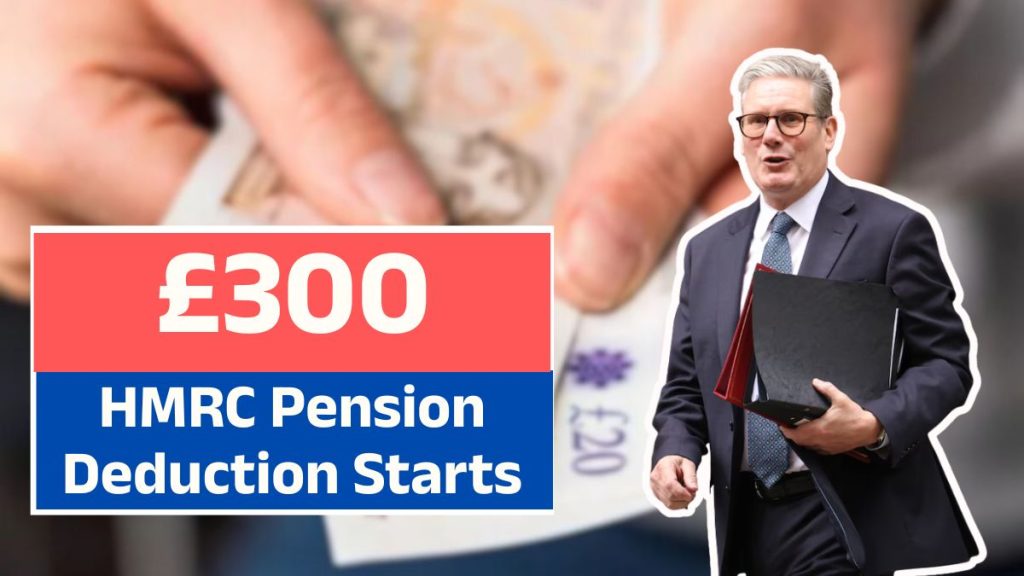The UK Government has officially confirmed a major HMRC policy update set to take effect on 1 November 2025. This reform is designed to transform how taxes are reported, processed, and managed in the country. Affecting millions of taxpayers, employees, and businesses, the upcoming changes aim to simplify tax reporting, promote transparency, and tighten compliance standards.
Why the Reform Matters

The upcoming changes mark one of the most significant modernisations in HMRC’s history. By transitioning to a digital-first system, the government aims to reduce errors, increase efficiency, and improve user experience for taxpayers. For individuals, this reform means easier access to tax records and faster filing. For businesses, it introduces new reporting schedules and technological requirements that demand early preparation.
What Will Change from November 2025?
The 2025 reform is part of HMRC’s wider Making Tax Digital (MTD) initiative, which seeks to modernise the UK’s entire tax infrastructure. Key highlights of the update include:
- Digitalisation of Tax Submissions through HMRC’s updated online portal, enabling seamless filing and payment tracking.
- Revised Reporting Timelines for self-assessment and PAYE systems, reducing end-of-year backlogs.
- Enhanced Data Verification measures to prevent tax fraud and incorrect entries.
- Mandatory Digital Records for specific income categories such as self-employment, property rental, and freelance income.
These measures are designed to create a transparent and accurate tax ecosystem by ensuring real-time data updates and error detection.
How the Update Affects Individual Taxpayers
For individual taxpayers, the 2025 policy update brings a more automated experience. The transition to digital filing is expected to eliminate paperwork and reduce the risk of human error.
Under the new rules:
- Digital Self-Assessment becomes mandatory, replacing manual or paper-based submissions.
- Quarterly Income Updates will be required from taxpayers with multiple income streams — including self-employed professionals, landlords, and investors.
- Automated Tax Calculations will estimate liabilities in real-time, preventing last-minute surprises.
These updates mean taxpayers will need to familiarise themselves with HMRC’s online tools before the rollout. Those already using the MTD for Income Tax pilot will find the process smoother and more intuitive.
Business Implications of the HMRC Update
Businesses — especially small and medium enterprises (SMEs) — must pay particular attention to the upcoming changes. The policy will overhaul how business records are kept and how taxes are reported.
Key business changes include:
- Quarterly Financial Reporting: Businesses must submit financial summaries every three months instead of yearly.
- Digital Record-Keeping: All transactions must be logged in HMRC-approved accounting software.
- VAT and PAYE Integration: The system will automatically align VAT and payroll data to ensure accurate reconciliation.
This integration aims to minimise errors and speed up refund processing. However, failure to comply may lead to delayed filings, fines, or even digital access restrictions.
Compliance, Audits, and Penalties
With automation comes stricter compliance monitoring. HMRC will have enhanced digital tools to flag inconsistencies and monitor filing accuracy.
The following penalties and conditions will apply:
- Late Submissions will incur higher fines compared to current standards.
- Incorrect Data Entries may trigger audits or investigative reviews.
- Repeated Non-Compliance could result in temporary suspension of online filing access or monetary penalties.
To stay compliant, individuals and businesses should transition to HMRC-recognised software early and maintain clean, verifiable digital records.
Preparing for the November 2025 Transition
Preparation will be crucial for a seamless shift to the new digital framework. HMRC recommends taking these steps well before the rollout date:
- Review Existing Filing Systems and migrate to online platforms if not already done.
- Adopt HMRC-Compatible Software like QuickBooks, Xero, or Sage.
- Train Staff or Accountants to handle digital submissions effectively.
- Stay Updated with HMRC Communications through newsletters and the GOV.UK portal.
Starting early will not only reduce compliance risks but also allow businesses to adapt comfortably before mandatory implementation.
Key Benefits of the New HMRC System
Despite the initial learning curve, the 2025 reform brings numerous advantages for both individuals and businesses:
- Reduced Paperwork and faster online filing processes.
- Greater Accuracy due to real-time data validation.
- Transparency and Accountability with accessible digital records.
- Faster Refunds through automated assessments.
The overarching goal is to make the tax system “right, simple, and efficient”, ensuring accuracy from the start rather than corrections after filing.
Expert Opinions on the HMRC Reform
UK tax professionals have largely welcomed the new digital approach but advise caution during the transition phase.
According to the UK Tax Adviser Network, “This is a necessary step forward. However, smaller businesses will need guidance and possibly government-backed support to make the transition without financial strain.”
The Chartered Institute of Taxation (CIOT) adds that taxpayers should begin experimenting with digital tools in early 2025 to understand the new system’s functionality and avoid disruptions.
Overall, experts agree that the reform represents a bold and positive evolution towards transparency and accountability in UK taxation.
Challenges to Anticipate
While the reform promises significant long-term benefits, the transition period may pose challenges:
- Technical Issues: Initial rollout phases may experience login delays, syncing problems, or system bugs.
- Training Needs: Accountants and small business owners must adapt to new reporting standards.
- Software Costs: Smaller businesses may need to invest in new tools, though HMRC plans to offer support and guidance.
HMRC has assured that a dedicated support line and extensive online help resources will be available during the transition phase.
Staying Informed and Ahead
The best way to stay compliant is to remain informed. HMRC has already begun issuing official updates through multiple channels. To stay ahead:
- Subscribe to HMRC bulletins and email alerts.
- Follow GOV.UK official updates on Making Tax Digital.
- Consult your accountant regularly for tailored advice.
- Join HMRC-hosted webinars and digital training sessions.
Proactive preparation will prevent last-minute confusion and ensure smooth compliance from November 2025 onwards.
Looking Ahead: A More Transparent Future
The November 2025 HMRC update is more than a technical upgrade—it’s a foundational shift towards a transparent, data-driven, and efficient taxation era. While it may take time to adjust, this reform will ultimately simplify how taxes are managed across the UK.
By embracing digitalisation now, individuals and businesses can stay ahead of deadlines, reduce administrative stress, and benefit from faster, more reliable tax processing in the years ahead.
FAQs
1. When does the new HMRC policy take effect?
The policy becomes effective on 1 November 2025, marking the start of a new digital era for UK tax reporting and compliance.
2. Will self-employed individuals need to change how they file taxes?
Yes. Self-employed taxpayers must submit quarterly digital updates instead of annual reports, using HMRC-approved software.
3. What happens if I miss a quarterly submission?
Late filings will attract higher fines than current penalties, and repeated delays may trigger compliance reviews or restricted access.
4. Are businesses required to buy new accounting software?
Businesses must use HMRC-recognised digital tools such as QuickBooks, Xero, or Sage for compliant reporting. Free or low-cost options may also be available for smaller firms.
5. How can taxpayers prepare before November 2025?
Begin transitioning to digital systems early, train relevant staff, and stay informed through official HMRC updates and webinars.
















